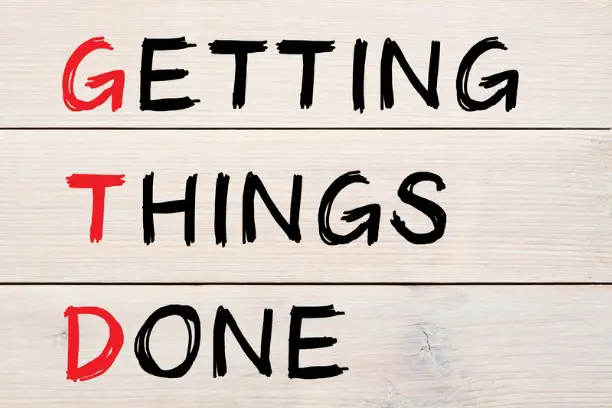As an online business owner, you know how challenging it can be to manage the multitude of tasks and responsibilities that come with running a business in the digital realm. From handling email overload and social media distractions to managing projects and staying focused on business goals, the online business environment can be overwhelming.
This is where the Getting Things Done (GTD) method comes in as a powerful productivity tool for online business owners. GTD is a widely recognized and proven methodology for managing tasks and responsibilities efficiently. It provides a systematic approach to dealing with tasks, enabling you to optimize your workflow and achieve higher productivity levels.
In this blog post, we will explore how you can use the GTD method specifically for online business productivity. We will provide an overview of the GTD method, discuss its core principles, and highlight its relevance to online business operations. We will also delve into the challenges of managing online business tasks and responsibilities and how GTD can be applied to overcome these challenges.
If you’re looking to enhance your online business productivity and effectively manage your tasks and responsibilities, then read on to learn how the GTD method can be a game-changer for your online business operations.
Overview of the GTD Method
The Getting Things Done (GTD) method is a productivity methodology developed by David Allen, a renowned productivity expert. At its core, GTD is designed to help individuals effectively manage their tasks and responsibilities in a systematic and organized manner, enabling them to achieve higher levels of productivity and reduce stress.
The GTD method is based on five core principles: capturing, clarifying, organizing, reflecting, and engaging. Let’s take a closer look at each of these principles:
- Capturing: The first step in GTD is to capture all your tasks, ideas, and responsibilities in a trusted system. This can be a physical notebook, a digital tool, or any other means that works best for you. The idea is to capture everything that has your attention, whether it’s a new task that comes to mind or an idea for a future project. By capturing everything in one place, you can prevent things from slipping through the cracks and ensure that nothing is forgotten.
- Clarifying: Once you have captured all your tasks and responsibilities, the next step is to clarify them. This involves processing each item in your capture system and determining what needs to be done with it. You need to ask yourself questions like: Is it actionable? If so, what’s the next step? Can it be done in less than two minutes? If not, can it be delegated or deferred? Do I need to add it to a specific project or category? By clarifying your tasks, you gain clarity on what needs to be done and can make informed decisions about how to prioritize and handle each item.
- Organizing: After clarifying your tasks, the next step is to organize them. This involves categorizing and prioritizing your tasks based on their context, due dates, and importance. You can create different categories or projects to group related tasks together, and you can use labels, tags, or folders to organize them in your chosen tool. The goal is to have a clear and organized system that allows you to quickly and easily locate and access your tasks when needed.
- Reflecting: Reflection is a critical step in GTD that involves reviewing and reflecting on your tasks and responsibilities regularly. Depending on your preferences, you can do this every day, every week, or every month. During reflection, you review your tasks, update their status, and evaluate your progress towards your goals. You can also identify any new tasks that may have come up and capture them in your system. Reflection allows you to stay on top of your tasks, make adjustments to your priorities, and ensure that you are on track with your goals.
- Engaging: The final step in GTD is engaging with your tasks. This means actually doing the work and taking action on your tasks based on their priority and context. With a clear and organized system in place, you can easily identify and focus on the most important tasks at any given time. By engaging with your tasks in a systematic and organized manner, you can work efficiently, make progress on your goals, and achieve higher levels of productivity.
Applying GTD to online business productivity
The GTD method can be effectively applied to online business productivity to help entrepreneurs and business owners better manage their tasks, projects, and responsibilities in the digital realm. Here are some key ways in which GTD can be applied to enhance productivity in the context of online business operations:
1. Capturing online tasks and responsibilities
In the digital age, online business owners often face an overwhelming amount of tasks and responsibilities coming from various online platforms, such as emails, project management tools, social media, and customer inquiries.
The first step in applying GTD to online business productivity is to capture all these tasks and responsibilities in a trusted system. This can be a digital task management tool, a dedicated email inbox for tasks, or project management software.
The idea is to capture everything that requires your attention in one centralized location, making sure that nothing falls through the cracks.
2. Clarifying online tasks and responsibilities
Once you have captured all your online tasks and responsibilities, the next step is to clarify them. This involves processing each item and determining its nature and actionability. For instance, if you receive an email from a customer with a support request, you need to clarify if it requires an immediate response or if it can be delegated to a team member.
If you receive a notification from a project management tool about a new task, you need to clarify what the next action is and if it needs to be added to a specific project or category. By clarifying your online tasks, you gain clarity on what needs to be done and can prioritize and handle them more effectively.
3. Organizing online tasks and responsibilities
After clarifying your online tasks, the next step is to organize them. This involves categorizing and prioritizing tasks based on their context, due dates, and importance. You can create categories or projects to group related online tasks together, such as “Emails,” “Social Media,” or “Website Updates.” You can also use labels, tags, or folders to organize tasks in your digital tool, making it easy to locate and access them when needed.
By organizing your online tasks, you can ensure that they are efficiently managed and prioritize your work effectively.
4. Reflecting on online tasks and responsibilities
Reflection is an essential step in applying GTD to online business productivity. Regularly reviewing and reflecting on your online tasks and responsibilities allows you to stay on track, make adjustments to your priorities, and ensure that you are making progress towards your goals. During reflection, you can review your tasks, update their status, and evaluate your progress.
You can also identify any new tasks that may have come up and capture them in your system. Reflection helps you stay organized and focused in the fast-paced online business environment.
5. Engaging with online tasks and responsibilities
The ultimate goal of GTD is to take action and engage with your tasks. In the context of online business productivity, this means actually working on your online tasks and responsibilities. With a clear and organized system in place, you can easily identify and prioritize the most important online tasks at any given time.
You can respond to emails, update social media profiles, create content, manage projects, and interact with customers in a systematic and organized manner. By engaging with your online tasks effectively, you can optimize your online business operations, make progress on your goals, and achieve higher levels of productivity.
Setting up a GTD System for Online Business
Setting up a GTD system for online business productivity requires careful planning and organization. Here are some key elements to consider:
- Tools: Choose the right tools to implement your GTD system. There are various task management apps, project management software, and email management tools available that can help you capture, clarify, organize, reflect, and engage with your tasks effectively. Some popular options include Trello, Asana, Todoist, Evernote, and Microsoft Outlook.
- Processes: Define clear processes for how you will capture, clarify, organize, reflect, and engage with your tasks. For example, establish a routine for checking and processing your email, scheduling regular times for reviewing and updating your task list, and setting up reminders and deadlines to ensure the timely completion of tasks.
- Workflows: Create efficient workflows that align with your online business operations. For example, if you have an e-commerce business, you may have different workflows for managing product inventory, processing orders, and responding to customer inquiries. Tailor your GTD system to fit these workflows and streamline your online business operations.
- Customization: Customize your GTD system to suit your unique needs and preferences. Every online business owner has different work styles and preferences, so it’s important to make your GTD system work for you. You can customize the categories, labels, and tags in your task management app; set up filters and rules in your email management tool; and adjust your processes and workflows to match your specific requirements.
Best Practices for Using GTD in Online Business
To make the most out of GTD in your online business, here are some best practices to consider:
- Capture Everything: Make sure to capture every task, idea, and responsibility that comes to mind. Use a reliable system, such as a task management app or a digital notebook, to collect and store all your tasks and ideas in one place.
- Clarify Priorities: Regularly review and clarify your tasks to determine their priority and relevance. Use criteria such as urgency, importance, and impact on your online business goals to prioritize your tasks and allocate your time and resources accordingly.
- Organize Effectively: Use categories, labels, tags, and folders in your GTD system to keep your tasks and responsibilities organized. Create a logical and intuitive structure that allows you to easily locate and access your tasks when needed.
- Reflect and Review: Set aside regular time for reflection and review to assess your progress, identify areas for improvement, and make necessary adjustments to your GTD system. Reflecting on your tasks and responsibilities can help you gain insights, learn from your experiences, and optimize your productivity.
- Manage Online Distractions: Online businesses are susceptible to distractions from social media, emails, and other online activities. Use strategies such as time blocking, turning off notifications, and setting boundaries to manage distractions and stay focused on your tasks.
- Regular Updates: Keep your GTD system updated and maintained regularly. Review and update your tasks, categories, labels, and tags as needed to ensure that your GTD system remains effective and aligned with your online business goals.
Conclusion
Implementing the Getting Things Done (GTD) methodology in your online business can significantly improve your productivity, organization, and overall success. You can manage your online business operations effectively, optimize your workflow, and accomplish your business goals by clearly capturing, organizing, reflecting on, and engaging with your tasks.
Remember to choose the right tools, define clear processes and workflows, customize your GTD system to suit your needs, and regularly update and maintain it for the best results. With careful planning and consistent implementation, GTD can be a game-changer for your online business productivity.🍀✨
Read More:
- 101 Frugal Tips to Save Money
- How to Overcome Procrastination and Boost Your Online Income
- 9 Bad Money Habits That Are Keeping You Poor
- 8 Daily Habits That Will Save You Money
- 9 Frugal Tips to Live Below Your Means






